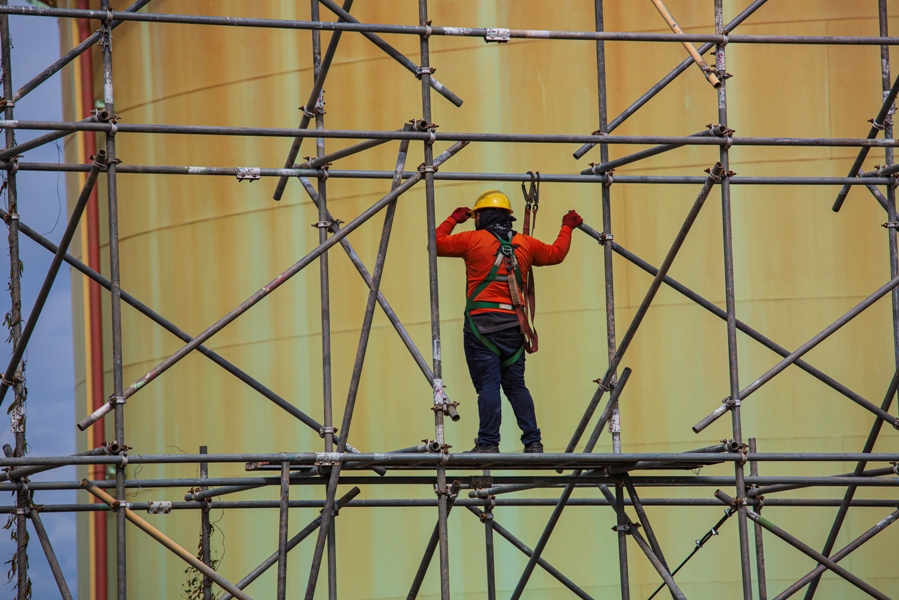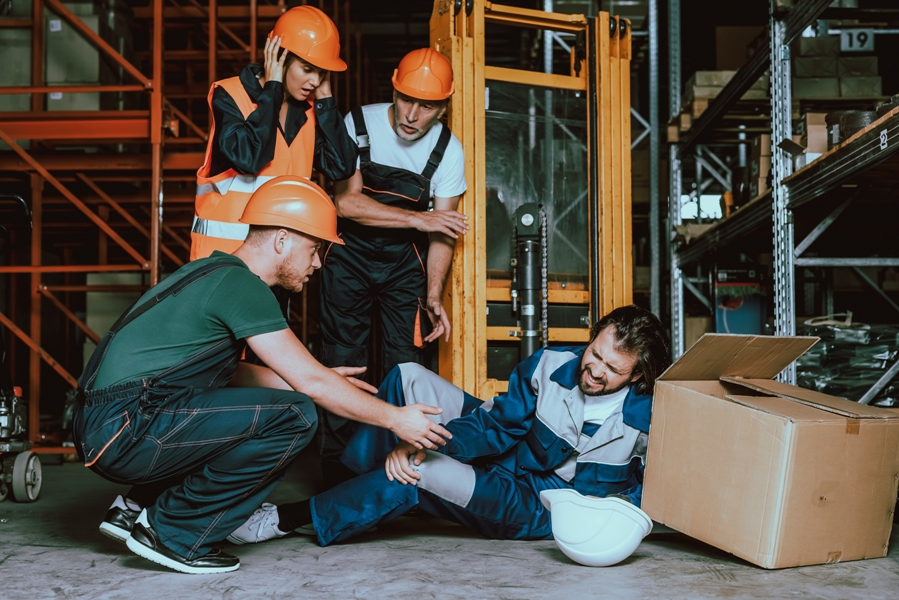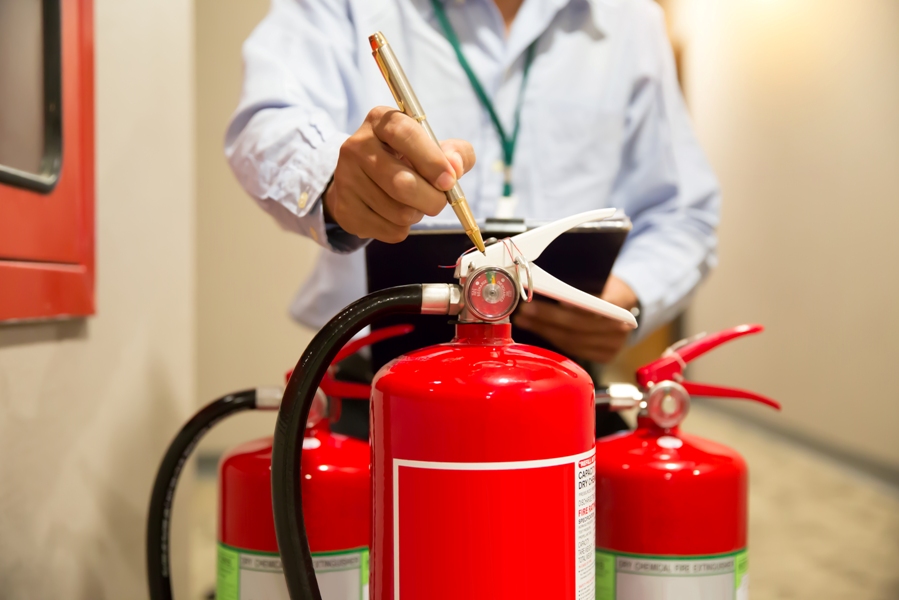
OSHA Cards – A Reference Guide
May 10, 2023
The Importance of HAZWOPER Certification in Hazardous Waste Operations
June 20, 2023Flagger Safety Jobsite Hazards and Steps to Mitigate Them

Flagger safety is of utmost importance in construction zones and road work areas. As a flagger, you play a crucial role in directing traffic and ensuring the safety of workers and motorists alike. However, the job of a flagger can be hazardous due to various factors, including high-speed traffic and encounters with angry or aggressive drivers. In this blog post, we will explore the two main flagger hazards, discuss effective mitigation strategies, and emphasize the significance of workplace safety training and hazwoper certification.
The Two Main Flagger Hazards
High-Speed Traffic
One of the primary hazards faced by flaggers is high-speed traffic. The proximity of flagging operations to fast-moving vehicles increases the risk of accidents and injuries. Flagger safety relies on the ability to effectively communicate with drivers and ensure their compliance with traffic control instructions.
Angry or Aggressive Drivers
Another significant hazard flaggers encounter is the presence of angry or aggressive drivers. The frustration and impatience of some motorists can lead to aggressive behaviors, such as speeding, disregarding traffic signals, or even attempting to intimidate or harm flaggers. Dealing with these confrontations requires specific skills and strategies to ensure personal safety.
Mitigating Flagger Hazards
To mitigate the hazards faced by flaggers and promote a safer working environment, the following steps can be taken:
Wear high-visibility clothing
Flagger visibility is critical in maintaining safety. Wearing high-visibility clothing, such as reflective vests or jackets, enhances visibility during both day and night operations. This allows drivers to identify flaggers from a distance, reducing the risk of accidents caused by limited visibility.
Wear protective equipment
In addition to high-visibility clothing, flaggers should utilize appropriate personal protective equipment (PPE). This may include hard hats, safety goggles, gloves, and steel-toed boots. PPE serves as a protective barrier against potential hazards, such as flying debris, vehicle impact, or slips and falls.
Plan an escape route
Flaggers should always have a planned escape route in case of an emergency or an approaching vehicle that poses a threat to their safety. Identifying safe zones or areas where they can move quickly out of harm’s way can be crucial in mitigating the risk of accidents.
Treat motorists with respect
Maintaining a calm and respectful demeanor when interacting with motorists can help diffuse tense situations. Clear communication, using hand signals and proper flagging techniques, can minimize confusion and frustration. By treating motorists with respect, flaggers can potentially defuse anger and aggression, reducing the likelihood of confrontations.
Strategize your location
Strategic placement is vital for flagger safety. Position yourself in a visible and safe location where you have a clear line of sight of approaching vehicles. Avoid standing in blind spots or areas where your visibility is compromised. By choosing the right location, you can maximize your effectiveness as a flagger and minimize the risk of accidents.
Stay alert and focused
Maintaining high levels of alertness and concentration is crucial for flaggers. Constantly scan your surroundings, paying attention to both traffic and construction activities. Avoid distractions such as personal devices or engaging in conversations that may divert your attention from the job at hand. By remaining focused, flaggers can quickly identify potential hazards and take appropriate action.
The Significance of Workplace Safety Training and Hazwoper Certification
To enhance flagger safety and mitigate hazards effectively, comprehensive workplace safety training is essential. Proper training equips flaggers with the knowledge and skills necessary to identify potential hazards, understand traffic control procedures, and respond effectively in emergency situations. It also emphasizes the importance of personal protective equipment and proper flagging techniques.
Moreover, flaggers who work in hazardous waste operations or in environments where hazardous materials are present should consider obtaining hazwoper certification. Hazardous Waste Operations and Emergency Response (HAZWOPER) training provides flaggers with specialized knowledge and protocols for handling hazardous materials and responding to emergencies effectively.
HAZWOPER certification covers topics such as hazard recognition, personal protective equipment, decontamination procedures, and emergency response protocols. By obtaining this certification, flaggers gain a deeper understanding of the potential dangers associated with hazardous materials and learn how to mitigate risks effectively.
Workplace safety training and hazwoper certification not only enhance flagger safety but also contribute to overall job site safety. When all workers, including flaggers, are properly trained and certified, they can collaborate more efficiently, maintain a higher level of safety awareness, and respond effectively to unforeseen circumstances.
Conclusion
Flagger safety is a critical aspect of maintaining a secure working environment in construction zones and road work areas. By recognizing the two main flagger hazards – high-speed traffic and encounters with angry or aggressive drivers – and implementing appropriate mitigation strategies, such as wearing high-visibility clothing, utilizing protective equipment, planning escape routes, treating motorists with respect, strategizing location, and staying alert, flaggers can significantly reduce the risk of accidents and injuries.
Moreover, emphasizing the significance of workplace safety training and hazwoper certification ensures that flaggers are equipped with the necessary knowledge and skills to handle hazardous materials and respond effectively in emergencies. Comprehensive training and certification not only enhance flagger safety but also contribute to a culture of safety throughout the job site, benefiting all workers involved.
As we prioritize flagger safety and implement these mitigation strategies, we create a safer environment for workers and motorists alike. Remember, safety should always be the top priority, and by investing in proper training, equipment, and protocols, we can work together to prevent accidents, protect lives, and ensure a successful and secure job site.
Established on March 1, 2001, in Augusta, Georgia, Impact Safety has dedicated itself to delivering comprehensive safety programs to businesses across the CSRA region. Drawing from an extensive 35-year background in professional, industrial, and construction domains, Impact Safety has successfully transformed workplaces into secure environments while optimizing operational efficiency. Learn more about our offerings and explore OSHA safety training courses by visiting our website at https://www.impactsafetyinc.com/.



